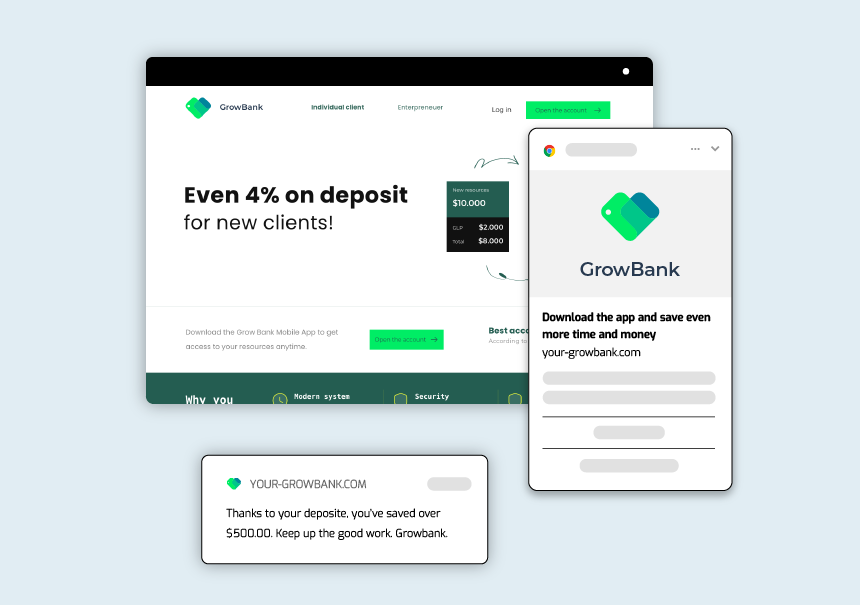Master RTM – what do you need to know about this advanced marketing technique?

Have you ever heard of RTM (real-time marketing)? This strategy can give your brand a significant boost in a short period. However, there are several important boxes to tick, and if you don’t do RTM correctly – you can end up being ridiculed or even hated by your fans. Let’s have a look at what you need to know about RTM.
RTM is all about what’s going on in the country, city, region, or your industry at this specific moment. RTM cannot be planned or organized. In this strategy, you have to be quick and smart. Of course, you also have to carefully follow the news and events and think about how they can be used in your marketing activities. This strategy relies on the company’s ability to use new and popular non-industry news for its own benefit.
Thanks to RTM, you can:
- Gain interest and publicity
- Increase the dissemination of published content
- Establish direct communication with current and potential customers
- Win engagement of your target audience
How to start using real-time marketing
First off, you need an event that will serve as a basis for your marketing activities. That’s why you ought to track and follow local, global, and industry news almost 24/7.
TIME IS OF THE ESSENCE
You must publish your RTM content at the perfect time. Posting too late puts you at risk that no one will pay attention to your post. Usually, there is just a narrow window of opportunity to make the most of RTM, so you have to be fast. Take a look at this chart below. Yes, it refers to the lifecycle of a meme, but it works the same way in RTM:
Real-time marketing is all about an immediate reaction. This way, you can impress your audience and generate laughter, comments, responses, and shares. The more RTM content you publish, the better you will be at selecting the perfect timing.
TRACK HOLIDAYS AND HASHTAGS
As we mentioned earlier, you cannot actually “prepare” for RTM, but you can streamline work by creating a content calendar for the whole year. Also, you can list all the holidays and special days, both local and international. Some of them are made mostly for fun (for example, did you know that on February 28, we have Public Sleeping Day?) so that can be a good starting point. Although RTM doesn’t have to be funny, it should evoke positive emotions so that people can connotate your brand with something nice.
Moreover, if you decide to implement real-time marketing, it is important to regularly research the most popular hashtags or topics covered in social media. Here, a social listening tool can be very handy. If you don’t have one, you can use other sources. For example, on TikTok, there is a “discover” section in the left-hand bar (just below the suggested accounts) where you can find trending hashtags, and on Tweeplers.com, you can find trending hashtags on Twitter.
Here, a word of advice. Before you publish anything RTM-related, you must be prepared to communicate with your audience. Some people will likely react to your post or comment. When sharing an article on a topic, you need to be ready for questions from consumers about the material you have just published. Again, only a quick answer will allow you to build trust and use the full potential of RTM.
WHAT DO YOU NEED TO CONDUCT AN EFFECTIVE RTM CAMPAIGN?
Apart from what we’ve already talked about, you have to know your target audience very well. There is no one-fits-all recipe for successful real-time marketing. All you have to do is make the most of your consumer knowledge and omnichannel marketing. Constant tracking of what is happening on the internet is also indispensable. The rest is just practice and experimenting.
Benefits of real-time marketing
People love staying up to date and knowing what’s going on. Major events also trigger many discussions and opinions that your brand can participate in. If you implement RTM, you can give your customers and users a space to share their points of view. As a result, you can:
- Develop a closer relationship with consumers and make your brand more down to Earth
- Generate authentic interactions and engagement
- Distinguish yourself from your competitors and other companies on the market
- Even give your website’s visibility a boost
Let’s say a few words about the last point. We have to be upfront here; RTM is NOT an SEO tool. However, if there is a lot of movement around your brand, it can help your visibility. RTM, when done properly, can be a tremendous source of shares and retweets so that you can reach many new people in a matter of hours and days. In effect, with a well-thought RTM strategy, you can generate more organic search results related to your brand and, thus, give your brand better exposure in the search engine.
Two examples of real-time marketing
For the sake of this article, we want to show you two examples of RTM – one good and one bad. We hope they will help you better understand what this strategy should and shouldn’t be about. If you publish your content too hastily or don’t think it through, the internet’s reaction can be really bad. They can get angry with your brand, ridicule it, or even ostracize it (in extreme cases). So, be careful; you’re on thin ice!
GOOD RTM EXAMPLE: IKEA
On May 19, 2018, in St George’s Chapel at Windsor Castle in the United Kingdom, Prince Harry and Meghan Markle were married. For obvious reasons, this was a worldwide event, and pretty much every news media was talking about it. Many brands saw the opportunity to use it in their RTM activities. One of them was IKEA. Take a look at their response to the royal wedding:
BAD RTM EXAMPLE: CINNABON
In 2016, when Carrie Fisher (known especially as Princess Leia in Star Wars) passed away, this pastry shop decided to publish a post on Twitter with Leia’s famous hair made of cinnamon rolls. The response from the market was not positive at all; just take a look at two of many more comments:
- “So, @cinnabon thinks death is a cool promotional tool”
- “@Cinnabon when it comes to branding opportunities, this really was the icing”
Cinnabon had to delete this post and publish another one saying they were sorry. This example perfectly shows that you have to be extra careful with RTM and that not every event or situation is suitable for marketing purposes. Always keep that in mind!
RTM is also about notifications and content that you show to your website visitors. And that’s where our role begins. Take a look at our RTM feature, and see how we can help you communicate with your customers precisely when you need it!



